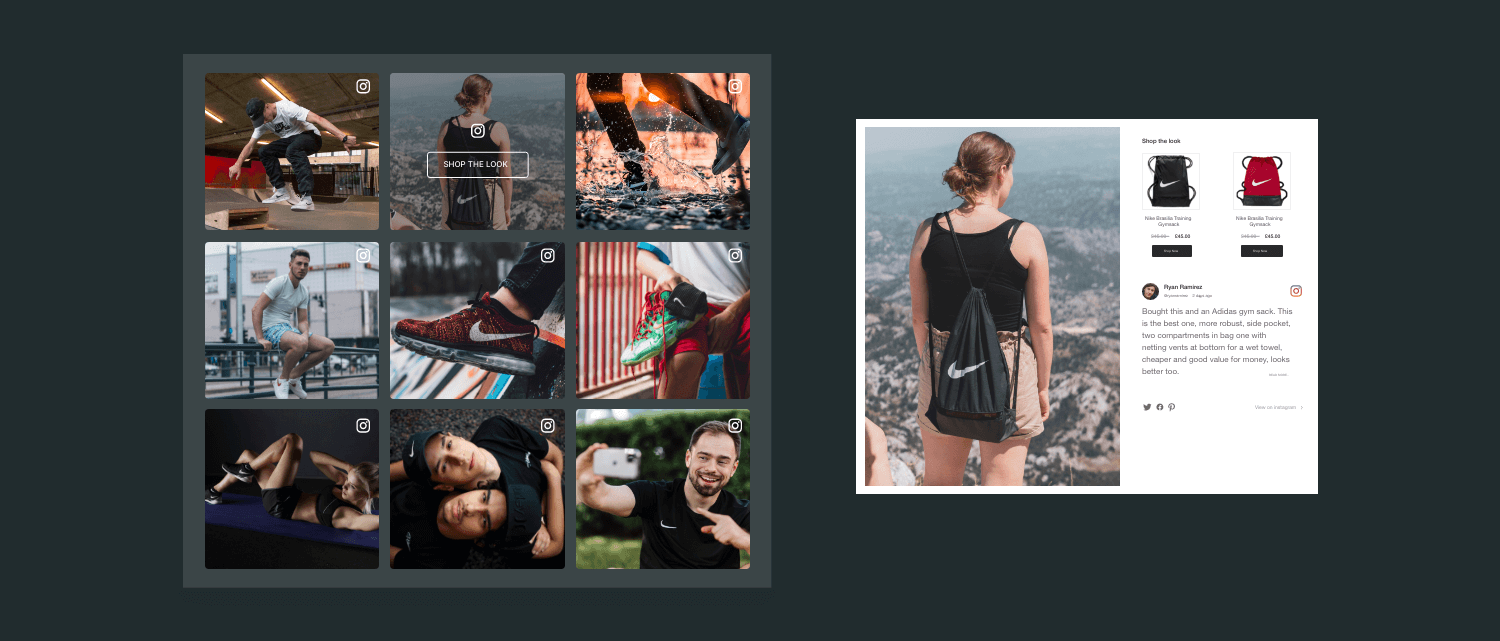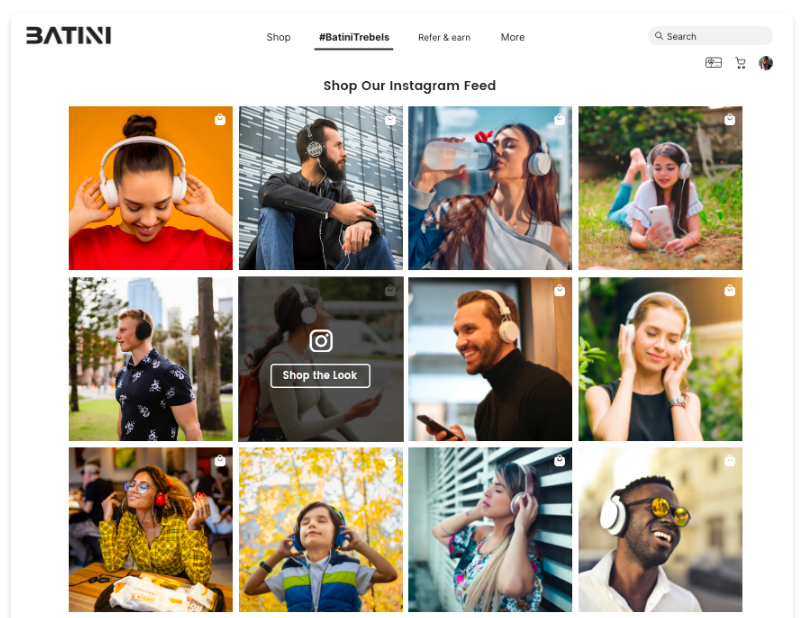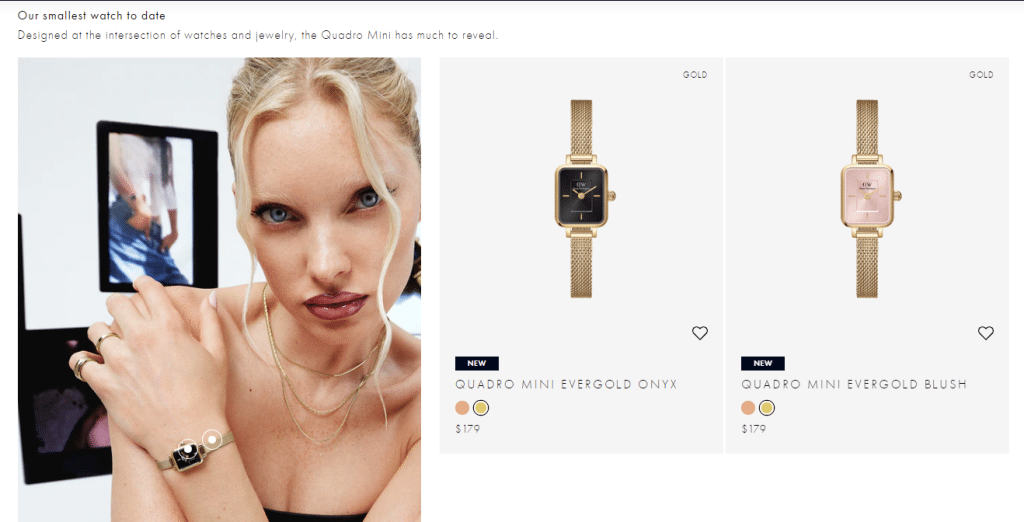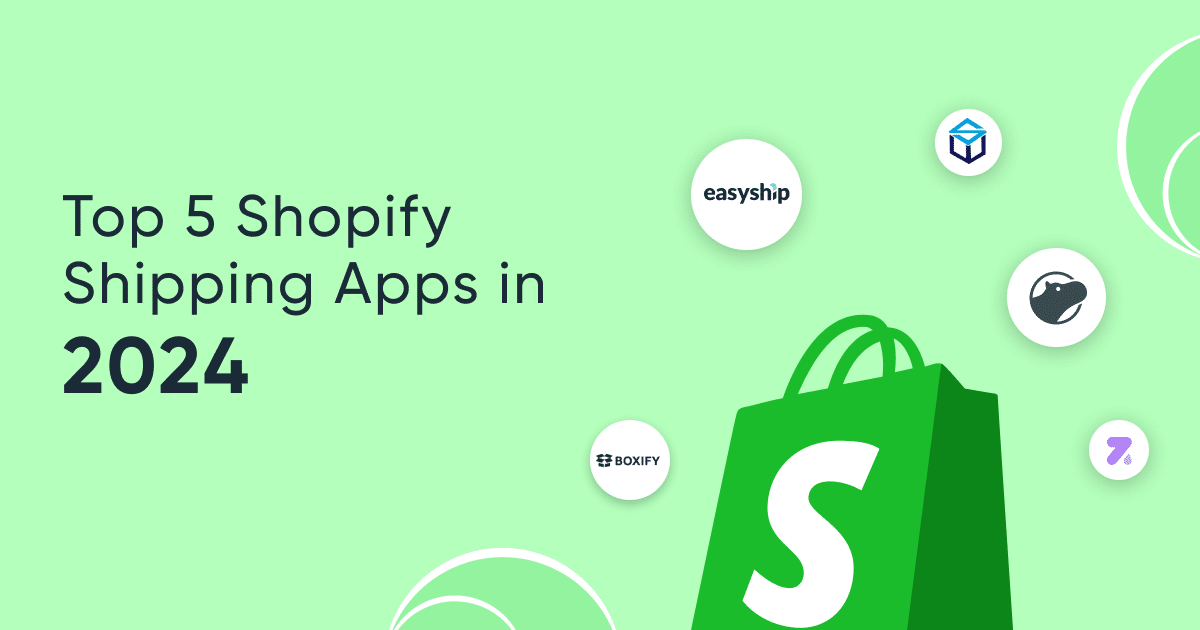The Complete Guide to UGC for E-commerce: Turn Your Content Into Conversions
The e-commerce industry is living on a competitive edge where businesses are continuously striving to stand out. But as the competition is expanding, so are the opportunities UGC for eCommerce businesses to mark their space.
User-generated content, for one, is becoming the ultimate source of social proof and authenticity for brands. UGC ecommerce is a strategy that is resulting in major gains like improved conversion rates, reduced cart abandonment, and better brand-customer relationships.
UGC e-commerce isn’t much different than its other forms. Let’s understand the term better.
Join the UGC Revolution
Learn How to Leverage Customer Content for Your eCommerce Store.
Learn for FreeWhat Is UGC In E-Commerce?
User-generated content is any form of content that is created by the customer or user of the brand. This content can be in the form of a social media post, images, videos, GIFs, textual reviews, etc.
What’s more is UGC in e-commerce seldom comes from actual customers of the brand. So, the content is naturally more authentic and is in itself a source of social proof for customers.
Many e-commerce brands have started incorporating UGC in their marketing strategies as it helps them create a rather customer-centric approach; the marketing is cost-effective, and the transparency is more emotive for the common consumers.
65% of brands believe that UGC helps them connect with their customers and foster their trust in the brand.
What makes UGC for e-commerce audience more interesting is the fact that they find it more relatable. They get to see the products beyond studio lights in action with a common consumer, depicting real-life images.
5 Benefits of Adding UGC in eCommerce Store

Here are the most significant reasons why leveraging user-generated content on your e-commerce store can be beneficial for your brand.
1. Allows Customers To See Products In Action
The thing about UGC in e-commerce is that it’s created by your brand’s real customers, showcasing actual use cases of your products. That’s what makes UGC so impactful as you get to show your products in action.
Generally, brands hire photographers, designers, and models to promote their products through brand-generated content. These ads feel pre-posed and made up. But, the raw nature of user-generated content lets your customers see products in action authentically.
2. Improves Customers’ Shopping Experience
Another top-tier benefit of user-generated content for your e-commerce is its ability to inspire consumers, helping them to make more informed purchases. E-commerce businesses can integrate user-generated content from social media platforms like Instagram, Facebook, Twitter, etc., into their e-commerce store’s landing pages.

This integration can be the ultimate solution to turn customers’ social engagement into social shopping. Moreover, integrating social shopping capabilities not only makes the shopping process more engaging but also makes it much more frictionless.
3. Humanizes Your eCommerce Campaigns
With the world evolving and new advances coming in, it has become much easier for users to distinguish between brand-created and user-generated content. Not only that, but consumer behavior has also shifted from getting mesmerized by the unrealistic brand ad campaigns to only trusting what’s more human and real.
Now, you no longer have to spend extra capital on hiring professional photographers and models. User-generated content works quite well in humanizing your e-commerce campaigns to catch the eyes of potential customers, evoke their emotions, and instill a curiosity in them to explore more with your brand.
4. Improves Brand Awareness & User-engagement
Improving brand awareness and user engagement is one of the top benefits of user-generated content. That’s because it instills a sense of trust among your customers through UGC, which is the best form of social proof.
Social proof works as a bandwagon effect; when a user comes across a social behavior that more people are following, they tend to copy that behavior. While your customers engage with the user-generated content you offer, they also get influenced to create content for you.

As more people generate content for you, it reaches more people, enabling better brand awareness. Not to mention how the transparency of your content would attract the prospects and encourage them to engage with your content and continue to explore more.
5. Increases Your Conversion Rate
This part is more like a concluding point for all the above-mentioned subparts stating the benefits of UGC for e-commerce stores. That’s because all of them clubbed together leads to a brand’s expedited conversion rate.
No matter what form user-generated content takes; photos, videos, reviews, ratings, etc., it holds the capacity to single-handedly engage, attract, influence, and convert a brand’s prospects.
79% of people have said that UGC highly impacts their purchase decisions. When e-commerce brands publish user-generated content across consumer touchpoints, it inspires prospects to make positive purchase decisions that eventually boost brand sales. The basic idea is to turn the point of inspiration into conversion, and UGC does that quite well.
So, you get the idea of how beneficial UGC can be for e-commerce businesses, from hosting full-fledged marketing campaigns to creating Shoppable UGC galleries that directly boost conversions. UGC really is a magical strategy for e-commerce.
But we understand that not every brand has so much user-generated content that they can use for promotions. Worry not! Because we’re about to tell you how you can encourage UGC for your e-commerce.
How to Encourage UGC for Your eCommerce Store?
Here is a small guide on how you can encourage user-generated content for your e-commerce.
1. Offer Incentives To UGC Creators
Customers are more likely to create content for a brand when they have a satisfactory experience with the brand or if they experience something unique in their interaction. However, it’s nothing set in stone. Not all customers create content for brands spontaneously.

Relating to that, a survey shows, 60% of users agree that they would gladly create content for a brand if rewarded. You can offer incentives like special discounts or freebies to your customers and encourage them to create more content for you. This cycle will help you bring in more creators for your brand, resulting in more UGC for your e-commerce.
2. Showcase UGC In Spotlight
Another great way to encourage UGC is by giving the validation your customers deserve for creating content for you in the first place. By putting their content in spotlight, let’s say, posting it on your brand’s social media page or your website’s homepage or product pages.
What’s more is, you can also use this UGC to your brand’s benefit by curating a shoppable gallery of this content. You can create a shoppable email gallery and share this content to more customers, inspiring more purchases.
3. Host Hashtag Campaigns
Hashtag campaigns are traditional yet the most effective marketing strategy. Not only to create brand awareness but to maximize the creation of UGC, where your audience willingly participates and creates the kind of UGC you want them to.
Choose a relatable and unique hashtag, and encourage your audience to join in. You can even announce a giveaway for the participants that come with attractive goodies. To take things to the next level, you can set up rules that the participants have to pose with your products to become a contender in the hashtag competition.
As hashtag campaigns are famous for instilling social proof, you can expect many users to participate. The hashtag campaign/competition will help generate a great amount of UGC. You can further repurpose user-generated content for endless e-commerce marketing purposes like Shoppable UGC Galleries, Shop the Look, etc.
4. Collaborate With Influencers
Another way to encourage UGC is by partnering with popular influencers and getting them to create trendy content for you. Find influencers that match your brand’s niche and have a relatable audience.
When their content reaches the masses, more users will come your brand’s way, get inspired and make purchases from you. This way, customers can indulge in this engaging activity and create content for your e-commerce, boosting content for your brand.
By implementing these strategies, you can encourage customers to share their experiences with your products in action, creating a valuable source of user-generated content that can help build trust and boost sales.
How to Collect UGC Content for Your E-commerce Business
While we’re addressing all the issues that e-commerce businesses face with UGC, how to collect UGC remains a major challenge for brands. Many times, the complication is not the idea of how you can utilize UGC but how to collect the maximum UGC your brand might have.
Let’s learn how to collect UGC for e-commerce brands.
1. Launch a branded Hashtag
You can create a unique branded hashtag that relates to your e-commerce and has a good recall value. You can then use this hashtag in your brand’s social media content or promote the hashtag on other marketing touchpoints.
After it has gained more recognition, you can gradually encourage your customers to use this hashtag when posting photos or reviews of your products on social media. You can monitor the hashtag closely and collect the UGC easily through the hashtag.
2. Use a content aggregator
Another simple yet the most effective way to collect UGC is by relying on a content aggregator tool. There are many tools available in the market, for example Tagshop, that can simplify the content aggregation process.
You can pick a social media network or source through which you would like to collect the content and get a complete gallery of content. This method can be labeled as the most convenient and cost-effective way to collect user-generated content for your e-commerce.
3. Request Content Rights
As you must be aware, user-generated content is a form of content that is created by the customer, not by the brand. Which also means that, a lot of time, the owner of the content is the customer, and the brand does not have the rights to use the content for personal use.
In such cases, you can always request content rights from the user. When you come across UGC that you’d like to use for your e-commerce business, reach out to the content creator and for their permission to feature their content on your website, social media, or other marketing materials. Be transparent about how you intend to use their content and give them proper credit.
4. Host a UGC Submission Programme
One more way to collect user-generated content from your customers is by adopting the most direct way. You can always ask your customers to share any type of content they may have of your brand for marketing purposes.
You can do it through a UGC submission programme where you can design a form and share it across your customers. You can provide them with a thank you gift card or any other small incentive that might win them and persuade them to share the UGC with you.
In this guide, we have talked about the benefits of user-generated content and how brands can put this strategy to use for their business. We have also discussed how brands can encourage and collect more UGC for their e-commerce.
Now, let’s quickly understand how brands can integrate UGC into their e-commerce strategy.
How UGC Integrated With E-commerce Store
If you are wondering how to get on board with the UGC on e-commerce, then here are the three basic forms of UGC to begin with.
1. Customer Testimonials Or Reviews
Customer testimonials or reviews are the precious words by your customers who have shared their experience with your brand. They enable potential customers to make confident purchase decisions with your brand. Consumers identify them as the most transparent and trust-building source, as 91% of them read at least one review before purchasing a product.
Leveraging your customers’ honest words to your e-commerce store adds to its credibility. It also eliminates your prospects’ review hunting step by offering them reviews right on your e-commerce step. Now, they no longer have to look around for reliable customer reviews, helping them make quicker purchase decisions.
2. The Visual Customer Experiences
Visuals play a vital role in influencing customers. That’s because humans are visual creatures, and they tend to engage with brands more often because of the vibrancy they have to offer. The visual form of user-generated content acts as the perfect addition to your e-commerce store. They not only engage your store visitors but also showcase your products’ real-life use cases.

The visual marketing strategy using UGC from social media platforms like Instagram, Twitter, YouTube, and Facebook is a remedy for e-commerce brands to shoot up their conversions. That’s because users are already discovering new brands on these platforms. Also, offering the same on your website calls for the huge potential for your brand to improve the conversion rate.
3. Shoppable UGC Galleries
If you think simply adding user-generated content to your e-commerce store could be the ultimate strategy, you might have to rethink. We are introducing you to the latest e-commerce trend: Shoppable UGC Galleries. Now, leverage the transparent content created by your customers to your website, and tag them as shoppable using product tags or hotspots.
These product tags enable your e-commerce store visitors with direct buying options. Now, they no longer have to go through your entire ecommerce store. They can engage, get inspired, and make a purchase from the Shoppable UGC gallery, offering them the perfect social shopping experience.
User-generated content is a beneficial strategy for e-commerce businesses looking to scale their growth and revenue. With these integration ideas, you can make the best use of your brand’s user-generated content.
For an even better understanding, here are some real-life successful examples of brands integrating UGC.
Examples of UGC for eCommerce
There is no one perfect way to utilize UGC for a brand. Every brand has different requirements, and each brand strategy to integrate UGC can take a different form. Here are some popular and inspiring brand examples of UGC for e-commerce.
1. Shop LC

Shop LC is a renowned lifestyle brand that is popular for dealing in miscellaneous products such as affordable jewelry, bags, footwear, and more. The brand is especially in demand among youngsters for offering quirky and stylish fashion pieces. Shop LC’s popularity is, however, not only limited to its products on its website.
The brand has an active and engaged audience on social media that regularly creates user-generated content for the brand. Shop LC has artfully curated a shoppable UGC gallery and has integrated it into their website. This UGC gallery has proven to be highly beneficial for the brand regarding growth and revenue.
2. Danielle Wellington

Daniel Wellington is a popular watch company that is creating wonders for its popularity through user-generated content. The brand has collaborated with numerous influencers and creators including micro-influencers, UGC creators as well as celebrity influencers.
The brand has launched a branded hashtag and utilizes it greatly to collect user-generated content from social media. Daniel Wellington is making use of this UGC by integrating it into their website. This integration has helped the brand into maximizing its popularity and has been able to generate direct revenue from it.
These are just a few examples of the many ways UGC can be used in e-commerce. The key is to create a UGC strategy that resonates with your target audience, demonstrates the value of your products, and builds trust in your brand.
Start Reaping the Benefits of UGC for Your Online Store
Act Fast To Boost Your Ecommerce Sales
Book Free DemoKey Takeaways
User-generated content has become a unique strategy and force for businesses across industries to build themselves as more customer-centric. UGC is superior in all of its forms, and it is time that businesses can recognize this powerful strategy for their own businesses.
In this blog, we have presented a complete guide on how businesses can use UGC for their e-commerce and why they can use it.
Frequently Asked Questions
User-generated content in e-commerce means any type of content, for example, images, videos, reviews, GIFs, or testimonials, that is created by the customer. This content is usually generated by the customers by their choice, and the brand has no involvement in the process.
User-generated content is highly significant for e-commerce businesses nowadays due to its authentic nature. It is created by the customer and is based on their genuine experience and serves as a social proof for new customers.
There are many types of user-generated content, such as, customer reviews, product ratings, social media posts, images, videos, blog posts, and testimonials. You can use all these types of UGC for your e-commerce.
You can integrate UGC in your product pages by relying on a social commerce platform like Tagshop. Tagshop lets users collect user-generated content from social media platforms or through its UGC uploader feature known as SnapUp. Users can then create a compelling content feed, add shoppable tags to it, and integrate it into their product pages seamlessly.
To use UGC as social proof, prominently display positive reviews, showcase customer images and testimonials, and highlight UGC on your website and marketing materials to boost credibility and conversions.








